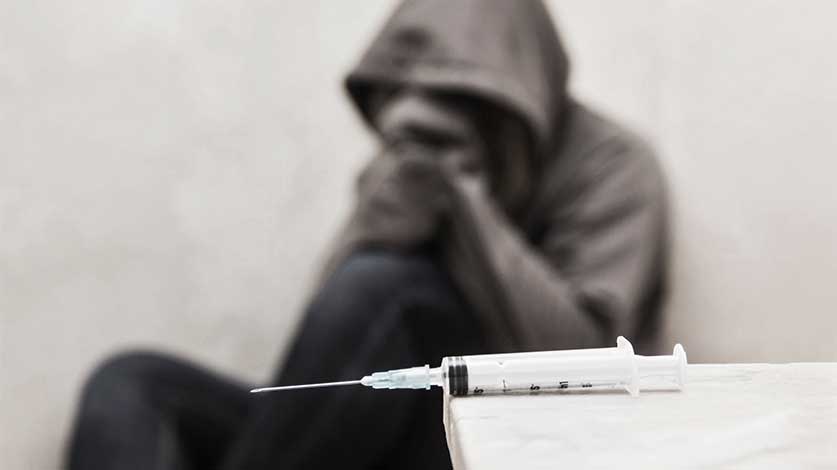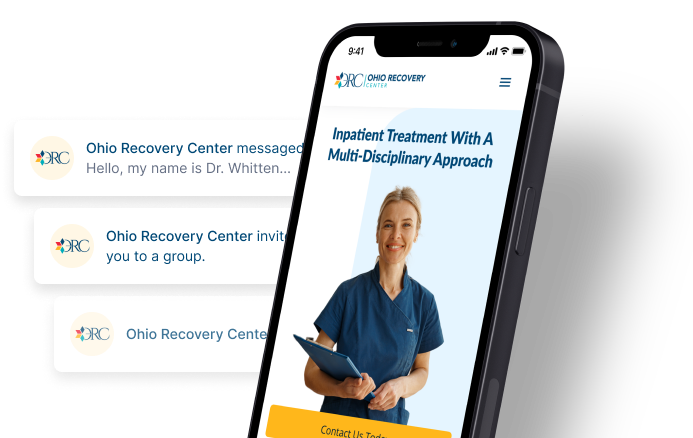Heroin Overdose | How To Recognize & Respond To A Heroin Overdose

Medically Reviewed By: Kimberly Langdon, M.D.

Heroin is an opioid drug that causes a rush of relaxation and euphoria (intense joy). It’s made from morphine, an opiate (natural opioid) found in the opium poppy plant. It can be injected, snorted, or smoked.
No matter how you use it, heroin poses a high risk of life-threatening overdose. It’s important to know the signs of heroin overdose and how to respond to them.
How To Recognize A Heroin Overdose
The most common symptoms of a heroin overdose include:
- drowsiness
- confusion
- slurred speech
- nodding
- slow, irregular, or shallow breathing
- slow, irregular, or stopped heartbeat
- low blood pressure
- limpness
- uncontrolled muscle movements
- pale, clammy skin
- bluish lips and fingernails
- smaller pupils
- dry mouth
- discolored tongue
- constipation
- gurgling
- nausea and vomiting
- loss of consciousness
Sometimes, it’s hard to tell whether someone is overdosing or just high on heroin.
Heroin High Vs. Overdose
Anyone who uses heroin may experience slurred speech, drowsiness, and nodding. However, if you’re not overdosing, these symptoms will be much less severe. You also probably won’t experience slowed breathing, pale skin, or deep gurgling.
Additionally, a person who is high on heroin can typically respond to talking, touching, and other forms of stimulation. In contrast, a person who is overdosing on heroin can’t respond to any form of stimulation.
How To Respond To A Heroin Overdose
If you think someone is overdosing on heroin, follow these steps:
Step 1: Try To Stimulate The Person
Make a fist, and rub your knuckles up and down the front of the person’s rib cage. This can stimulate the person and cause them to wake up. If they don’t wake up, continue to Step 2.
Step 2: Call 911
Call 911, and explain that the person is unresponsive. The dispatcher will likely ask you to describe any other symptoms the person is experiencing. They will also need to know exactly where you and the person are located so they can send help.
Step 3: Administer Naloxone (Narcan)
Before first responders arrive, you can improve the person’s chance of survival by administering naloxone (brand name Narcan). As an opioid antagonist, this medication blocks heroin from binding to opioid receptors in your brain.
According to the Substance Abuse and Mental Health Services Administration (SAMHSA), it can quickly reverse the effects of an opioid overdose.
You can get naloxone at most pharmacies without a prescription. It’s available as a nasal spray or an injection.
To administer the nasal spray, tilt the person’s head back, and spray the naloxone into one nostril.
To administer the injection, put on gloves, use the provided syringe to draw up the contents of the naloxone vial, and inject the syringe into the person’s shoulder or thigh.
Your doctor or pharmacist can give you more information on how to use naloxone.
Step 4: Administer Rescue Breathing
Make sure nothing is blocking the person’s mouth or throat, and follow these steps:
- lift the person’s neck or chin to open the airway
- pinch the person’s nose
- use your mouth to make a seal over the person’s mouth
- give 2 rescue breaths
- give 1 rescue breath every 5 seconds until help arrives or the person starts breathing
Step 5: Stay With The Person
If the person does not respond to the rescue breathing within 5 minutes, administer a second dose of naloxone. Then, do not leave the person’s side until help arrives.
Once the naloxone kicks in, the person might experience opioid withdrawal symptoms like anxiety and sweating. Try to keep them as calm and comfortable as possible.
When first responders arrive, they will evaluate the person’s condition and take additional steps to stabilize them. They may transport them to the emergency room if necessary.
Heroin Overdose Facts In Ohio & The U.S.
In the United States, the heroin-related overdose death rate has been decreasing since 2016. Between 2019 and 2020, it fell nearly 7%.
However, heroin is still a leading contributor to drug overdose deaths. It contributed to almost 20% of opioid-related overdose deaths in 2020. That same year, it caused 310 overdose deaths in Ohio. About 83% of those deaths also involved fentanyl.
Fentanyl-Laced Heroin
Fentanyl is a powerful prescription opioid used to treat cancer pain. According to the Centers for Disease Control and Prevention (CDC), it’s up to 50 times more powerful than heroin. However, it’s relatively cheap to manufacture. That’s why some drug dealers secretly add it to heroin and other illicit drugs.
People who ingest fentanyl-laced heroin are much more likely to die of an overdose than people who ingest regular heroin. Unfortunately, fentanyl-laced heroin is often identical to regular heroin. That means that the only way to avoid a fentanyl-related overdose is to never use heroin.
If you feel unable to stop using heroin, you may be struggling with heroin addiction (also called heroin use disorder). Like other addictions, this disease requires professional treatment.
To learn about heroin addiction treatment options, please contact Ohio Recovery Center. Our compassionate healthcare providers offer a wide variety of drug abuse and addiction treatments, including medical detox, mental health counseling, and medication-assisted treatment.
- American Psychological Association — Recognizing and Responding to Opioid Overdose https://www.apa.org/advocacy/substance-use/opioids/resources/recognizing-overdose.pdf
- Centers for Disease Control and Prevention — Fentanyl Facts https://www.cdc.gov/stopoverdose/fentanyl/index.html#:~:text=Fentanyl
- Centers for Disease Control and Prevention — Heroin Overdose Data https://www.cdc.gov/drugoverdose/deaths/heroin/index.html
- National Library of Medicine: MedlinePlus — Heroin overdose https://medlineplus.gov/ency/article/002861.htm
- Substance Abuse and Mental Health Services Administration — Naloxone https://www.samhsa.gov/medication-assisted-treatment/medications-counseling-related-conditions/naloxone

